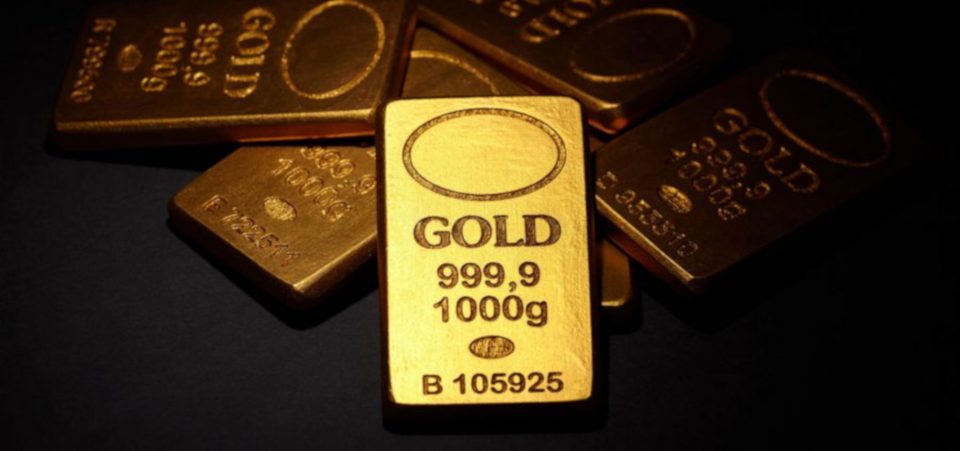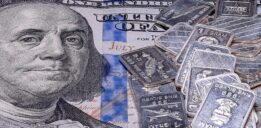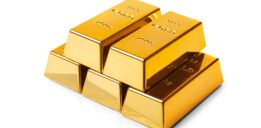The U.S. Economy Is Under Attack as Gold Moves Higher
For the past decade, the U.S. economy has performed at a vastly faster pace than its European counterpart. The 2008 financial crisis originated on Wall Street, but it spread worldwide and Europe was hit especially hard. Despite its all-American roots, though, the subprime crash hurt Europe much more. But now, it seems that this pattern has reversed. Europe is growing more confidently, and the U.S. economic collapse is a real possibility.
The signs of a U.S. economic collapse and a major market crash are everywhere. Perhaps the one that’s becoming most obvious is the gold price. The gold rally that few expected has arrived. On September 8, it closed at the one-year high of $1,351 per ounce. The surprise factor raises the question: What is driving investors toward bullion and away from stocks?
Now, to suggest that people are abandoning stocks is premature. The Dow is at an all-time high of close to 22,000. But that’s its weakness. It’s too high. Sooner, rather than later, people will notice they are exposing their savings to a major risk of financial gravity. They’re like Wylie Coyote sawing off parts of the canyons without looking below.
Except, savings and investments are real life. When they lose their value, you find out about it fast and it hurts. There’s no magic cure. Still, some are still rationalizing the Dow that’s gone past any logical level. They are saying that the force behind rising gold prices comes from a heightened geopolitical risk.
The geopolitical alarm, in this case, is emanating from North Korea. Pyongyang has performed a combination of nuclear explosion tests and intercontinental missile launches. Both have been successful enough to sound the alarm bells in Washington. In turn, the U.S. dollar has absorbed more risk and has weakened. In fact, the dollar is dropping like a brick against all major currencies.
But the falling dollar has delayed the Federal Reserve’s plans to raise interest rates. The fact that the Dow is still hovering in the neighborhood of its record 22,000 points is related. The Fed has decided it’s too risky to raise rates now, thus investing remains artificially enhanced—as it has been over the past few years of quantitative easing (QE) after all.
That’s why I don’t see increasing gold prices as being simply, or only, related to cautiousness and uncertainties over geopolitics. There is also an internal political risk. The U.S. is more divided now than it was even in the heydays of the Vietnam War protests of the late 1960s and 1970s.
The American mainstream media can take considerable credit for this dubious achievement. But there’s also the fact that stock valuations are coming out of thin air. Price-to-earnings ratios are on average around 24. They’re begging for a correction. The fact that the Fed cannot act according to its own plans offers a loud message about the risks of investing in the stock market now. The markets and the U.S. economy are but a few interest basis points away from disaster.
The Fed is now projecting raising the nominal interest rate in early 2018. But even that is a big question now. Inflation has not risen. The jobs report was mixed. The economy added 157,000 new jobs rather than the expected 180,000. But many American industries are under pressure.
Retail, for example, is fighting an epochal battle. Competition led by online retail giants like Amazon.com, Inc. (NASDAQ:AMZN) is forcing brick-and-mortar stores to lower their margins. That means retail, a significant generator of typical lower-income jobs, is about to add many people to the unemployment office lines. Meanwhile, the weaker dollar means that the many imported items that fill store shelves will be more expensive.
If the Fed defies the overall macroeconomic framework by raising rates, it won’t necessarily halt the dollar’s decline. Geopolitical risks will remain at an intense state. North Korea is just the latest crisis to win space in the headlines. But the risks of wars in the Middle East and terror attacks against U.S. interests remain as strong as ever.
Then there’s the euro, which has totally reversed course. Not even a year ago, it seemed like the dollar was about to reach parity with the euro. Not so. The euro has continued to rise against the dollar. The European Central Bank (ECB) seems ready to review the monetary easing policy, raising rates in 2018 if not sooner.
For its part, the dollar remained weakened by a series of poor economic indicators in the United States, which will prompt more delays in the Fed’s key rates. The U.S. economy is simply facing multiple attacks from an accumulation of bad news. Economic collapse and a major stock market crash are to be expected.






